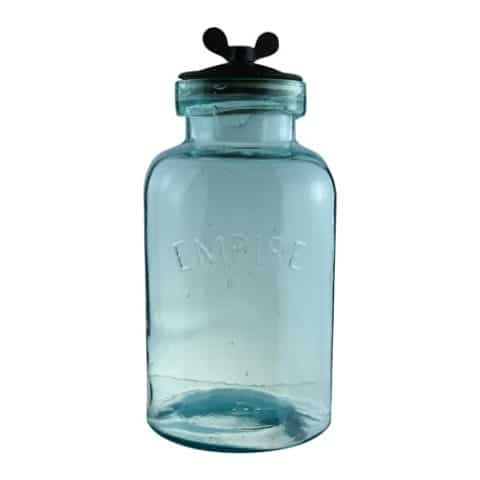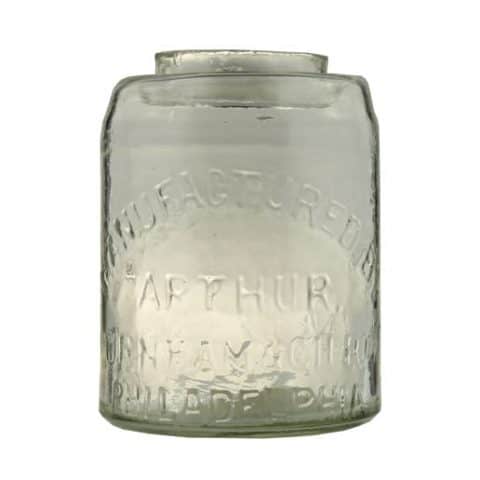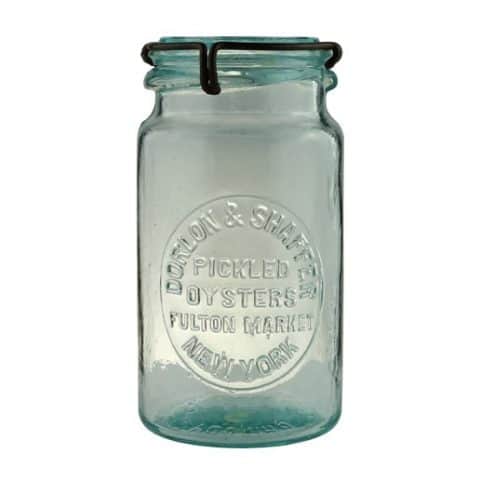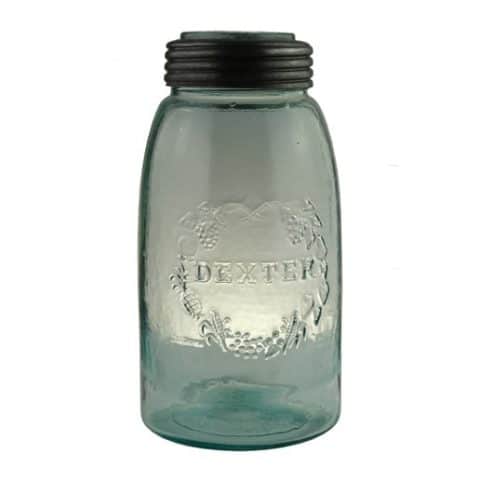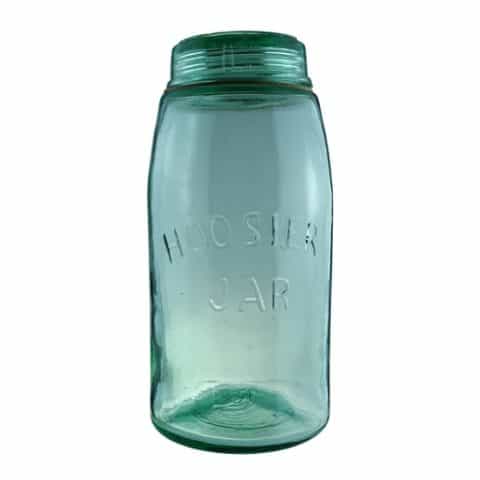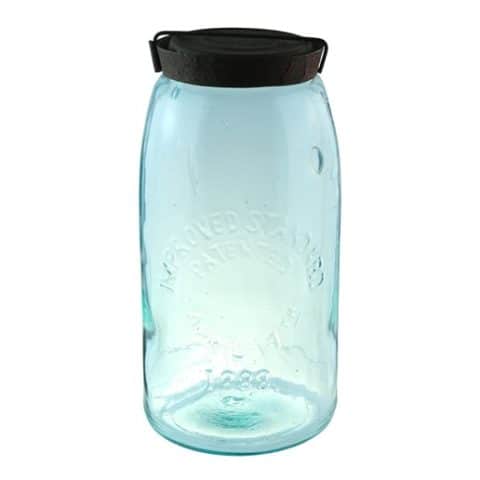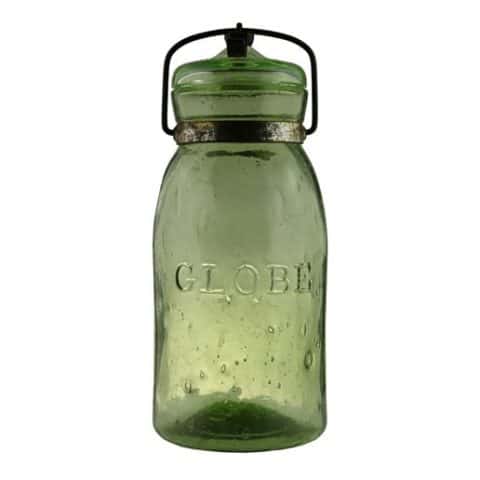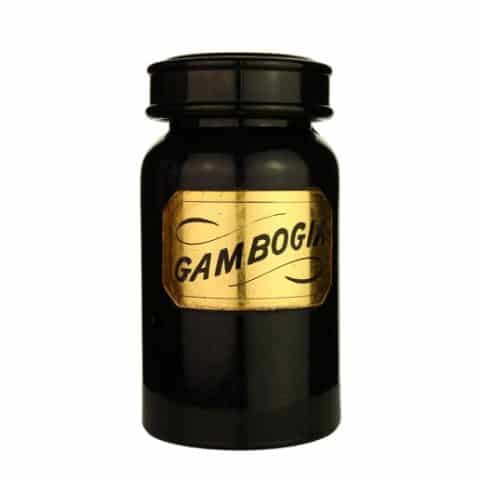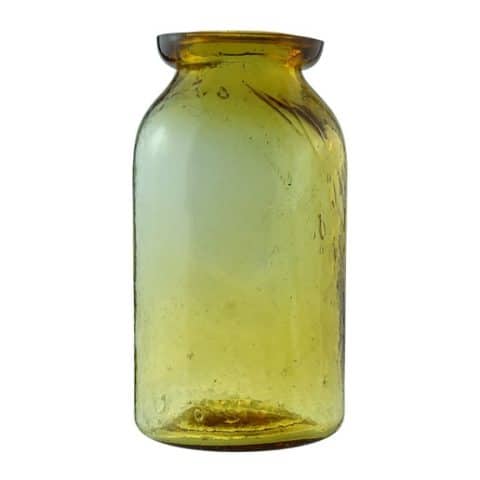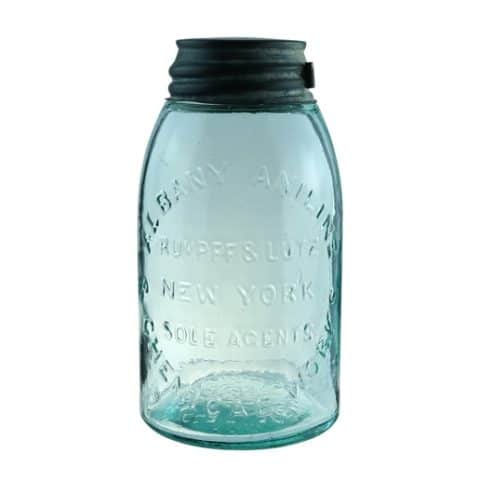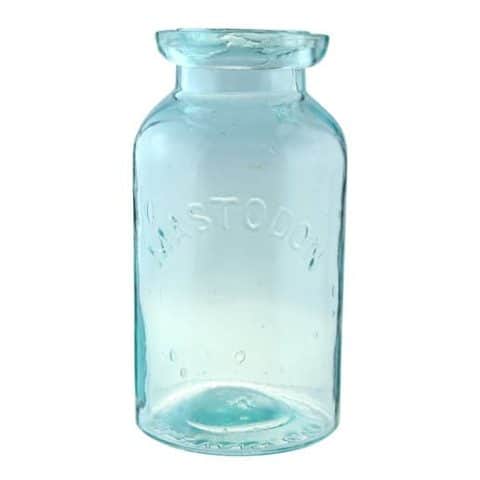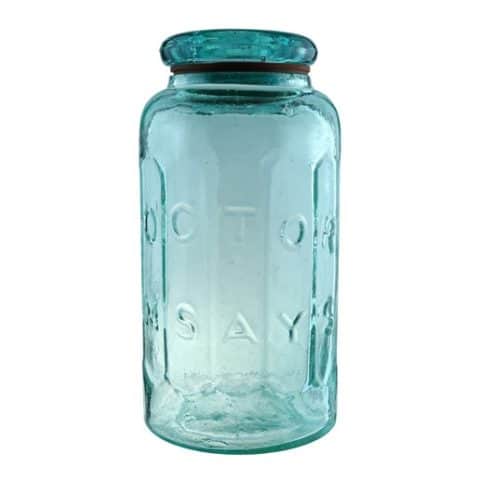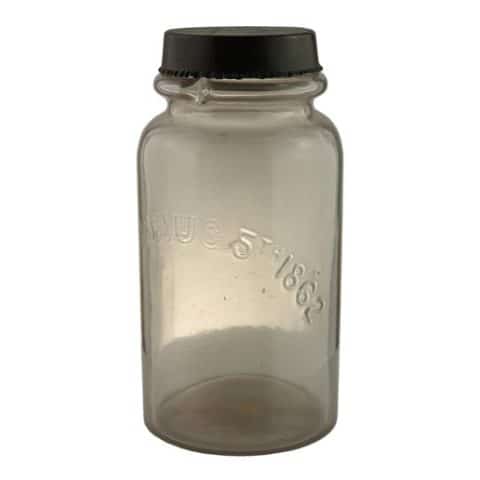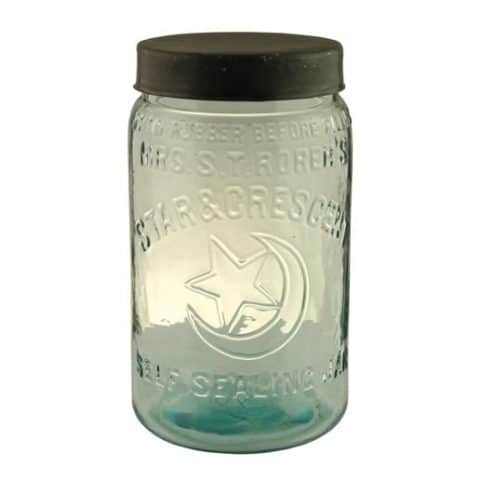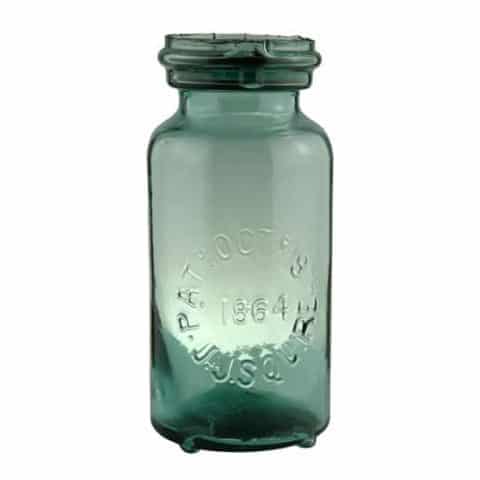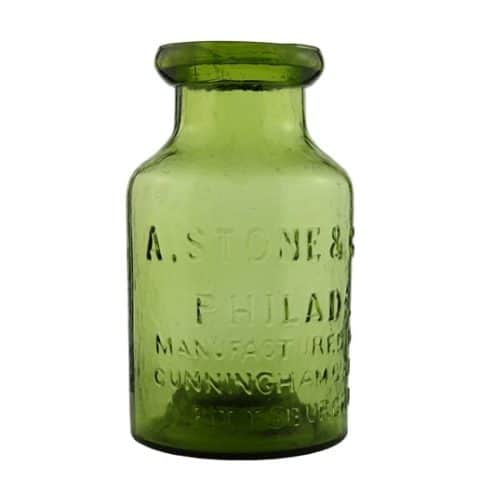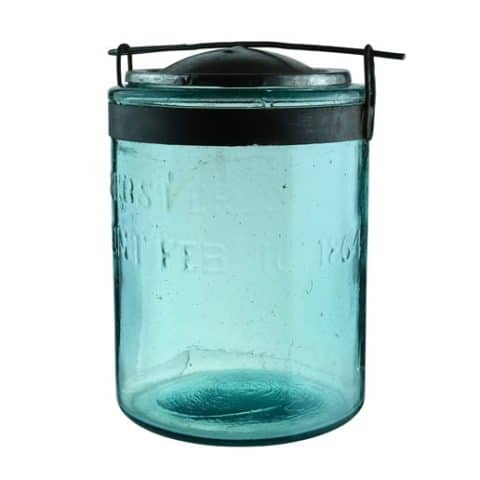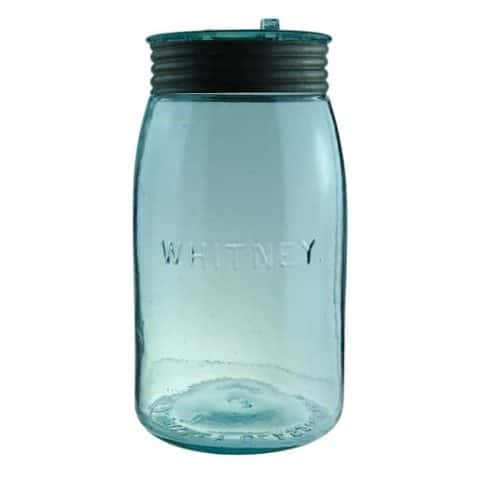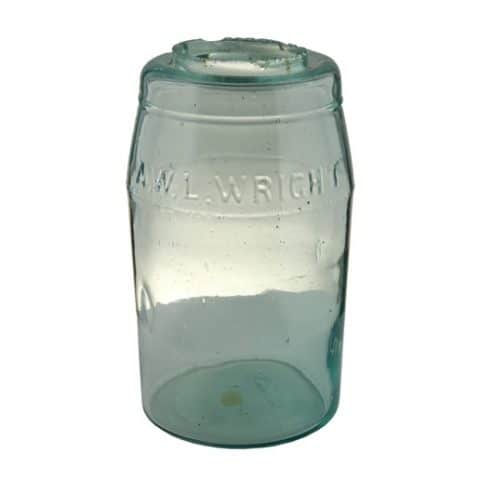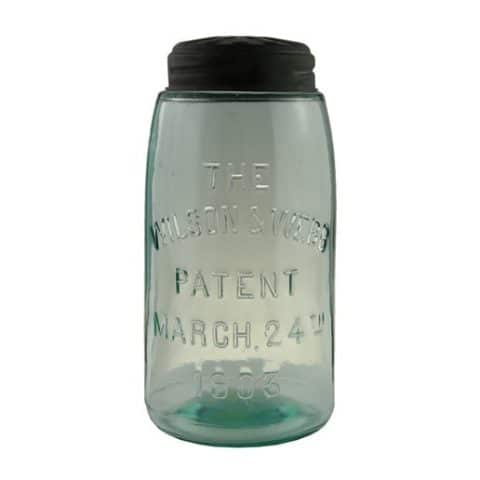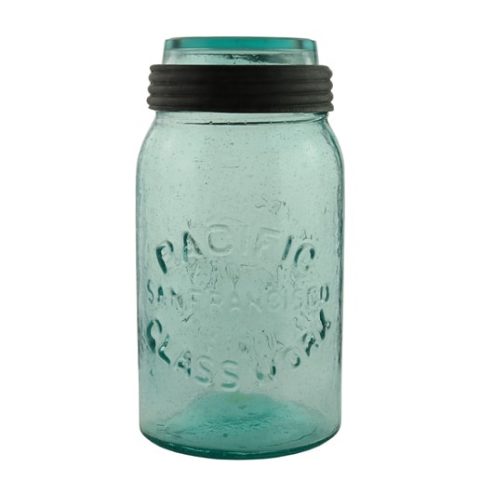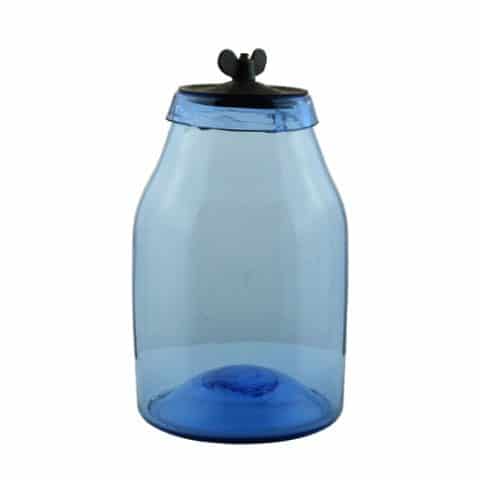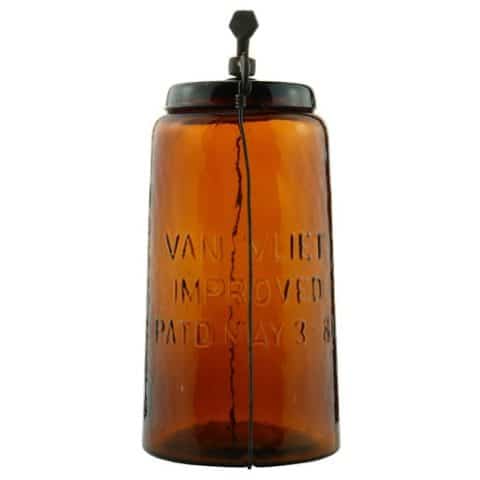Woodbury Improved WGW (monogram) Jar
Woodbury Improved
WGW (monogram)
Woodbury Glass Works, Woodbury, New Jersey
Yellowish Orange Amber
Provenance: Darrell Plank Collection

On display is an extremely rare quart “Woodbury Improved WGW Monogram” jar. Typically, when found, you will see the jar in an aquamarine glass. This example was made in a yellowish orange-amber glass which is unique at this time. The “WGW” monogram stands for Woodbury Glass Works in Woodbury, New Jersey. The jar is a variation of the “Woodbury Fruit Jar.”
Woodbury was founded in 1683 by Henry Wood, a Quaker from Bury, England, who left Great Britain due to religious persecution. He settled in what would later be called Woodbury in 1683. On October 22, 1777, during the Revolutionary War, the battle of Red Bank was fought nearby and many of the wounded Hessians were brought to Woodbury and the town’s brick schoolhouse was used as a treatment facility. Many of the soldiers died and were buried in the north part of the school grounds. The location came to be known as Burying Ground. During that winter, Woodbury was occupied by five thousand British troops led by Lord Cornwallis. During the occupation, troops pried open doors and cupboards raiding the town of provisions. The City of Woodbury was incorporated in 1854 and in the latter half of the 1800s prospered greatly, in part, due to the Green family and their patent medicine industry.
When looking at an 1886 Woodbury town map with ornate illustrations, you see Green Castle Hotel, G. G. Green’s Block, the residence of G.G. green, the residence of L. M. Green, J. D. Green Clothier, Standard Window Glass Works, G. G. Green president, Woodbury Steam Flour Mills & Wharf. G. G. Green, Proprietor, Woodbury Glass Works, G. G. Green, president, and G. G. Green’s Laboratory.

The owner of Woodbury Glass Works was millionaire George G. Green and several glassblowers who held a minority balance of the shares. The glassworks consisted of two large and one small factory. At full capacity, the works employed about 400 hands, many young children which was a common practice at the time. When first started, one factory was almost entirely run to provide bottles for G. G. Green’s patent medicines which included Green’s August Flower, Boschee’s German Syrup, and Green’s Ague Conqueror. The Woodbury Jar was made at these works and was one of their main sellers.
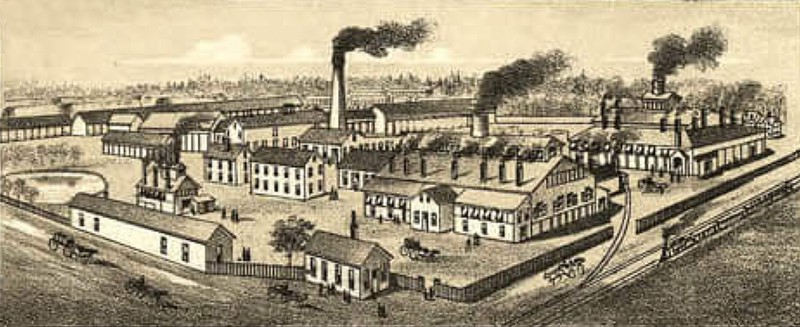
See Child Workers at Woodbury Bottle Works, November 1909.
See examples of Woodbury Sterilizer half pints and rack.
Our subject example is embossed in a sans serif alphabet with horizontally centered copy reading ‘WOODBURY’ placed above smaller straight line copy reading ‘IMPROVED.’ Below the “Improved” copy is a large monogrammed “WGW” with a large “W”, a smaller “G” overlapping the large “W” to the left and a smaller “W” overlapping the large “W” to the right. There is no embossing on the reverse of the jar. The base is embossed ‘WOODBURY GLASS WORKS WOODBURY, N.J.’

Our example is a ground lip, hand-blown, top-sealing jar. It has a straddle lip glass lid with a vent hole in the center of a threaded boss. The vent hole is covered by a small zinc screw cap. The lid itself is also held down by a zinc screw cap. The lid is embossed on the underside ‘PATD NOV. 25 ’84 MAR. 3D ’85 MAR. 16 ’86 JUNE 29 ’86.’ The zinc cap is stamped ‘THE WOODBURY IMPROVED’ with several patent dates. The patent drawing for the jar is represented below for T. G. & J. H. Otterson Cap or Cover for Jars or Cans. No. 308, 571. Patented Nov. 25, 1884. The jar is listed in the Standard Fruit Jar Reference (SFJR) as #1400 and in the Red Book #12 as #3029.

Primary Image: The Woodbury Improved WGW Monogram jar imaged on location by Alan DeMaison, FOHBC Virtual Museum Midwest Studio
Support: Reference to Red Book #11, the Collector’s Guide to Old Fruit Jars by Douglas M. Leybourne, Jr.
Support: Reference to Fruit Jar Annual 2020 – The Guide to Collecting Fruit Jars by Jerome J. McCann
Support Image: Child workers at Woodbury Bottle Works, November 1909. Photographed by Lewis Hine.
Support Image: Auction Lot 16084: Set of Four WOODBURY STERILIZER Half Pints with Rack – Greg Spurgeon, North American Glass, February 2018
Support Images: Illustrations of G. G. Green residence and Woodbury Glass Works from a panoramic view map of Woodbury, New Jersey drawn and published by O. H. Bailey & Co. in 1886.
Join the FOHBC: The Virtual Museum is a project of the Federation of Historical Bottle Collectors (FOHBC). To become a member.













